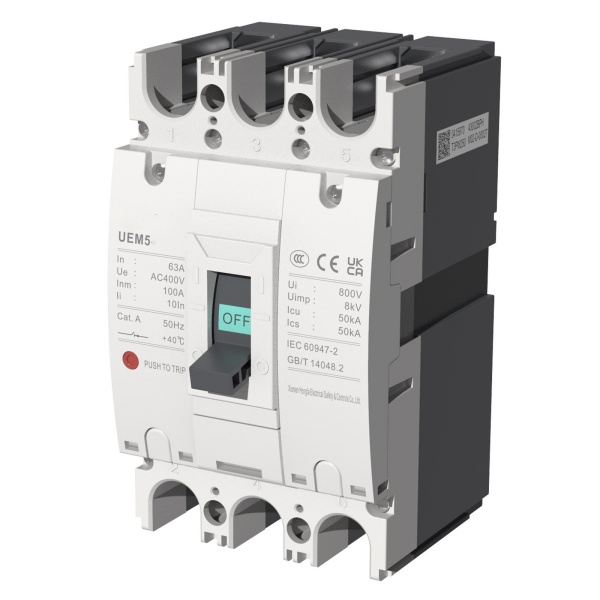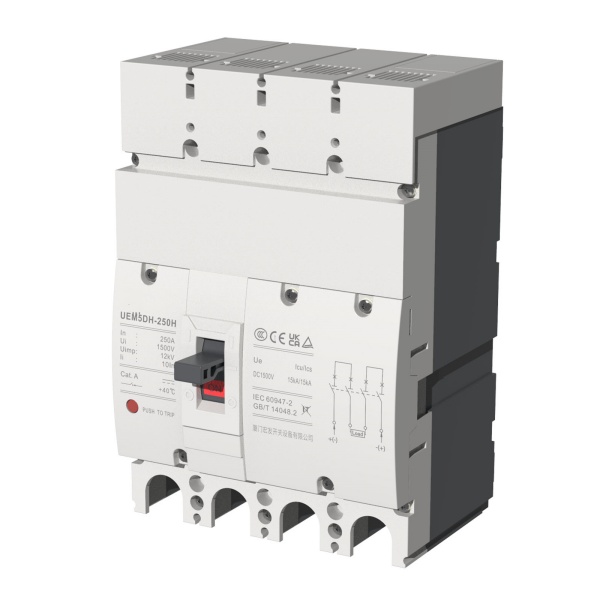In electrical engineering, although both molded case circuit breakers and miniature circuit breakers are rather important, their design and use differ clearly. While molded case circuit breakers are primarily utilized in main circuits, stressing the capacity to swiftly disconnect significant currents, miniature circuit breakers are usually employed in terminal circuits to provide fine overload and short-circuit protection. Their physical form is merely one reflection of this diversity; their protection qualities and application situations also show it. Knowing these variations is very important for electrical engineers choosing suitable protection devices for design and maintenance of electrical systems. Deep knowledge of the features and uses of these devices helps to ensure more precisely the stable operation and safety of electrical systems. While molded case circuit breakers lack this phenomenon, which could certainly cause misunderstanding, miniature circuit breakers feature C and D curves. The following provides a thorough analysis of this variation in form—that of questions and answers.

UEM5 AC MCCB Circuit Breaker
Question 1: Why do miniature circuit breakers have C curves and D curves, but molded case circuit breakers do not?
Answer:The C curve and D curve of the miniature circuit breaker are set according to the different load properties and different requirements for the instantaneous protection of the circuit breaker. While the D curve is fit for loads with high beginning currents, such motors, the C curve is fit for general loads. Apart from the C and D curves, there are B curves, K curves, etc., meant to fit various load characteristics. Although molded case circuit breakers are likewise split into distribution type and motor type, their design and application situations are different from those of small circuit breakers, thus the division of their protection curves is not as clear as that of miniature circuit breakers.
Molded case circuit breakers are usually used in higher current distribution systems, and their design focuses more on quickly disconnecting large currents to prevent serious electrical faults. Consequently, molded case circuit breakers’ protective properties center more on short-circuit protection than on overload protection. This is the reason molded case circuit breakers lack as clear protection curve divides than miniature circuit breakers.
Question 2: D curve miniature circuit breakers are used for motor-type loads, but they also have overload protection; but why do motor-type molded case circuit breakers have no overload protection?
Answer: Motor-type loads, especially electric motors, usually require thermal relays as overload protection. Based on the thermal effect of current, thermal relays may identify overload situations, therefore offering more precise and dependable protection. Should a thermal relay already be in use, the miniature circuit breaker’s overload protection becomes less important.
However, in some small motor applications, the thermal relay may be omitted and the overload protection of the miniature circuit breaker may be relied upon instead. In this regard, the miniature circuit breaker’s overload protection feature is rather crucial. Furthermore, the small circuit breaker’s overload protection can be utilized as cable protection to guarantee that, in overload situations, the power supply is cut off in time, therefore preventing cable overheating.
For molded case circuit breakers, since they are usually used for loads with larger currents, such as large motors, they are usually used in conjunction with thermal relays. In this situation, configuring overload protection in the circuit breaker is superfluous and can complicate matters and raise expenses. Consequently, rather than offering overload protection, molded case circuit breaker design emphasizes on fast disconnecting of short-circuit currents.

UEM5DH MCCB Breaker
In general, the differences in design and application of miniature circuit breakers and molded case circuit breakers lead to differences in their protection characteristics. Whereas molded case circuit breakers concentrate more on fast disconnecting capabilities of big currents, miniature circuit breakers concentrate more on flexibility and adaptability. Their superior adaptation to various electrical systems and load needs results from this design variation.
Post time: 7 月-19-2024


